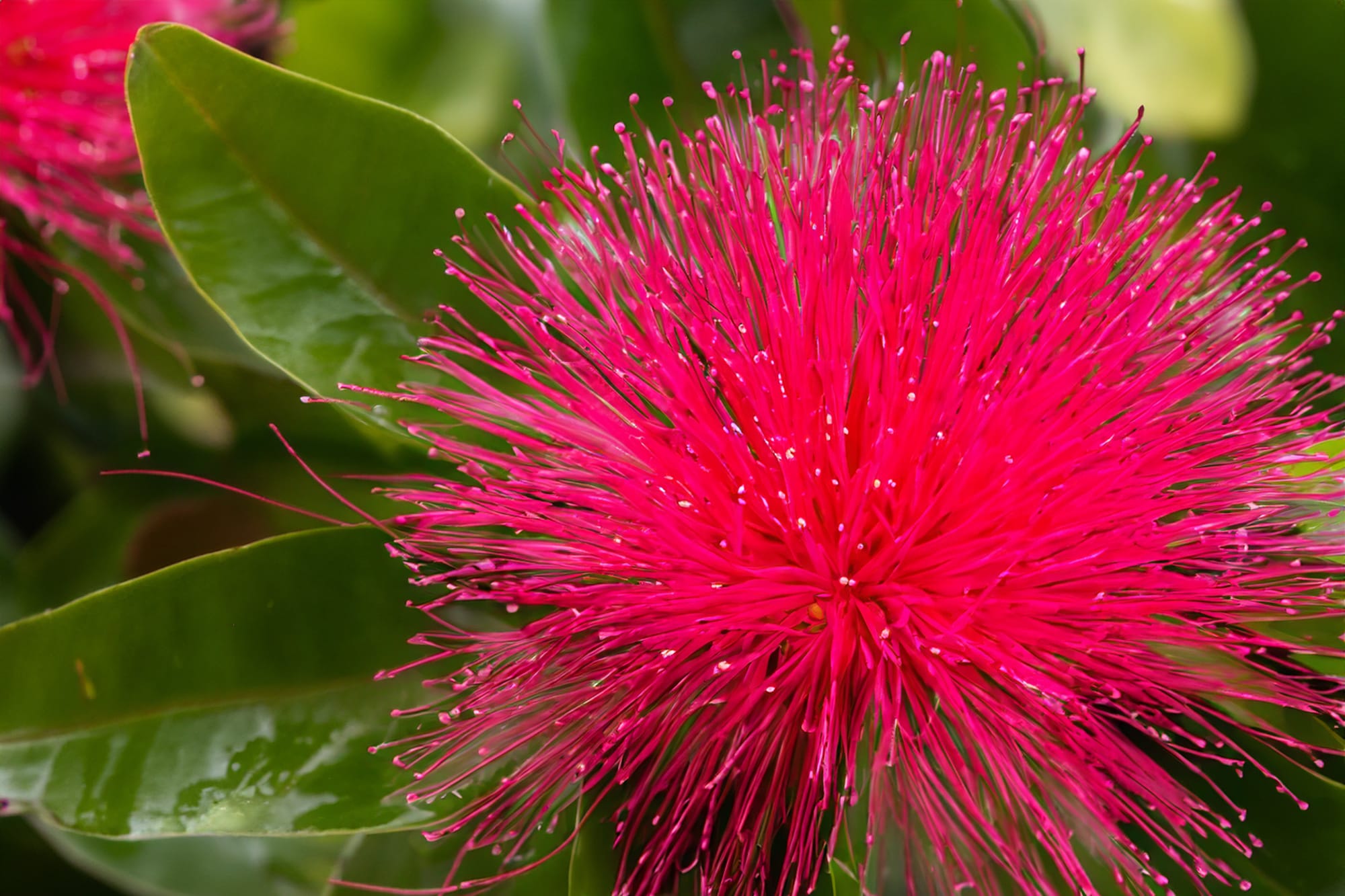For the fourth article in this series, I’ll discuss a plant with a striking red bloom, Calliandra californica (aka Baja Fairy Duster, Fairy Duster, Zapotillo, Powder Puff). Despite its name, it is not native to the state of California, but Baja California of Northern Mexico. Over 150 species in the Calliandra genus are found in semi-tropical/tropical areas worldwide.
The Fairy Duster is a woody, evergreen shrub 3-5 feet high and up to six feet wide. It has fern type leaves and belongs to the legume family. The blooms of this plant steal the show and are evidence for its common names with exploding clusters of 8-12 flowers, each with 17-26 red stigma filaments that average 3-5 cm in length. These bright, showy stamens create a spherical puff of red that is reminiscent of the aged dandelion. It is drought, heat, and pest resistant, making it ideal for use for desert landscaping. Not only do the show stopping blooms provide visual excitement, with its high sucrose content, it is a favorite of hummingbirds and bees.1, 2, 3
Traditional medicinal uses of this plant include decoction preparations for urological conditions such as cystitis, kidney pain, urethritis and prostate inflammation. It has also been used historically to treat cramps, fever, and toothaches. However, documentation is scarce. A reported non-medical application includes using its roots as a red dye for leather goods.3
What does modern research say about the Fairy Duster? Similar to traditional medicinal uses, few publications are available However, what has been published is promising for the treatment of two big hitters: tuberculosis (TB) and tumors.
In 2006, a scientific publication isolated two diterpene compounds – escobarine A and B. The study showed activity against two mycobacterium tuberculosis strains, including the resistant CIBIN/UMF15 0:99 strain. Excitingly, the minimum concentration needed for inhibition was eight times lower than that of Rafampin, an antibiotic currently used to treat TB. This same publication also reported cytotoxicity against five human tumor cell lines.4 In 1994, another paper was also published demonstrating anti-microbial activity of two of its flavone compounds.5
While publications of this plant are limited, many other species in this same genus have evidence of medicinal applications, which lends to the ever present conversation of needing more scientific research to be done and documentation of traditional medicinal uses of Earth’s botanical treasures to be shared.
It is my hope that when you see this dramatic bloom throughout the Coachella Valley, you will ponder its potential a little longer and contemplate all that nature has to offer and the expanse we have yet to discover!
Dr. Shari Jainuddin is a naturopathic primary care doctor at One Life Naturopathic and also offers biofeedback training and craniosacral therapy. This article is intended to be informative and is not provided as medical advice. For more information, call (442) 256.5963 or visit www.onelifenaturopathic.org.
Sources available upon request.









































Comments (0)